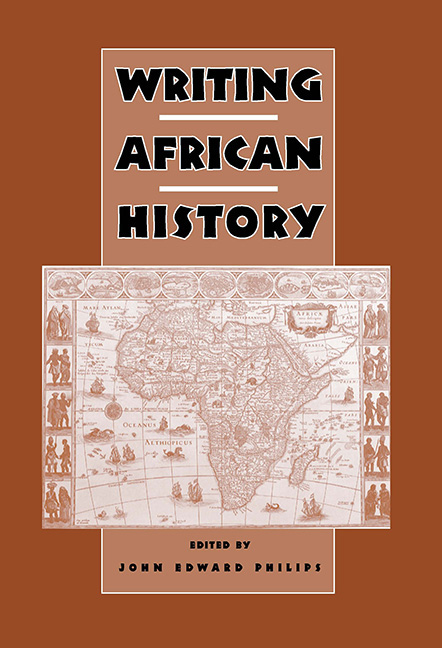Book contents
- Frontmatter
- Dedication
- Contents
- Acknowledgments
- Introduction
- Part I Background
- Part II Sources of Data
- Part III Perspectives on History
- 11 Data Collection and Interpretation in the Social History of Africa
- 12 African Economic History: Approaches to Research
- 13 Signs of Time, Shapes of Thought: The Contributions of Art History and Visual Culture to Historical Methods in Africa
- 14 Methodologies in Yorùbá Oral Historiography and Aesthetics
- 15 Local History in Post-Independent Africa
- 16 Africa and World-Systems Analysis: A Post-Nationalist Project?
- 17 “What Africa Has Given America”: African Continuities in the North American Diaspora
- 18 History and Memory
- 19 Writing About Women: Approaches to a Gendered Perspective in African History
- Part IV Conclusion
- Contributors
- Index
- Miscellaneous Endmatter
17 - “What Africa Has Given America”: African Continuities in the North American Diaspora
from Part III - Perspectives on History
Published online by Cambridge University Press: 11 May 2017
- Frontmatter
- Dedication
- Contents
- Acknowledgments
- Introduction
- Part I Background
- Part II Sources of Data
- Part III Perspectives on History
- 11 Data Collection and Interpretation in the Social History of Africa
- 12 African Economic History: Approaches to Research
- 13 Signs of Time, Shapes of Thought: The Contributions of Art History and Visual Culture to Historical Methods in Africa
- 14 Methodologies in Yorùbá Oral Historiography and Aesthetics
- 15 Local History in Post-Independent Africa
- 16 Africa and World-Systems Analysis: A Post-Nationalist Project?
- 17 “What Africa Has Given America”: African Continuities in the North American Diaspora
- 18 History and Memory
- 19 Writing About Women: Approaches to a Gendered Perspective in African History
- Part IV Conclusion
- Contributors
- Index
- Miscellaneous Endmatter
Summary
During my graduate years at UCLA, the great French cultural anthropologist Jacques Maquet once posed a theoretical question in class: How does one reconstruct the history of a symbolic object that long ago lost its meaning in a culture? No answer was satisfactory because current anthropological methods did not provide the methodology for answering this hypothetical question. Maquet knew the problem was of great complexity, but solvable. He used an example from mathematics: “To find a solution that will provide a method and give the outcome, correlational modeling might be useful.” Maquet went further, saying, “Anthropological studies must go beyond current methods and map out new territories that have not yet been crossed.”
The research problem I was trying to solve had to do with the similarities in masking tradition between the Ijaw of southern Nigeria and the Dan of Liberia. Here were two almost identical material objects, yet the content, structure, form, and meaning were understood only in one culture. I approached Maquet during his office hours for some direction, and his advice was that my approach should be multidisciplinary, using all available resources and methods at hand to reconstruct an anthropological past that had been lost in time. I got a map of West Africa and mapped similar masking traditions throughout the region, using what I called the “Shot Gun” method. That is, I did a crosscultural comparison within a radius of five hundred miles analyzing similar cultural objects. After finding that the mask being studied exists in the above two cultures only, I used oral tradition to discover that a group had migrated from what is now Nigeria some five hundred years earlier and resettled in the Liberian region, and that they were most likely responsible for preservation of the masking tradition in the Dan region. In other words, by mirroring the symbolic object as it relates to their religion, ceremonies, aesthetic, folktales, dance, and so forth, the original meaning and purpose of the aesthetic object could be reconstructed from the anthropological and historical past. Years later these methods would be used to reconstruct African content in contemporary Gullah culture in North America.
This chapter focuses on various methodological approaches to the study of Africanisms in North America. At present the Diasporic approach has given the debates a new focus.
- Type
- Chapter
- Information
- Writing African History , pp. 403 - 438Publisher: Boydell & BrewerPrint publication year: 2005

